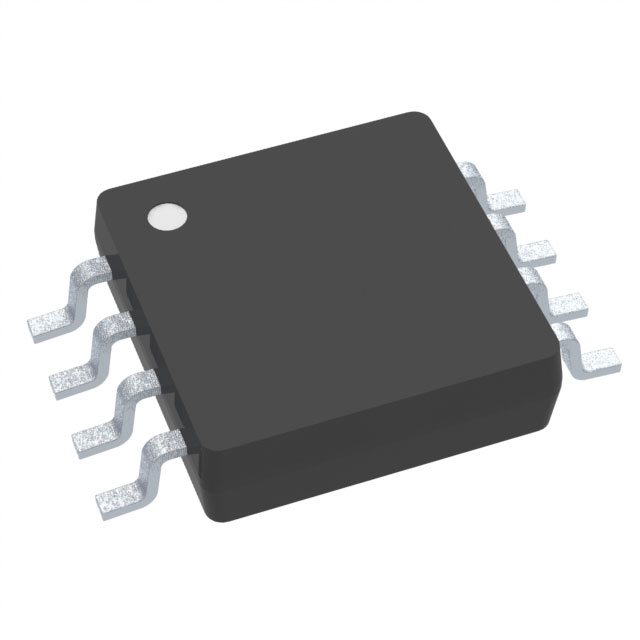

Texas Instruments
INA152EA/2K5
OP Amps, Buffer Amps ICs
INA152EA/2K5
687-INA152EA/2K5

Texas Instruments-INA152EA/2K5-datasheets-1655584.pdf
IC OPAMP DIFF 1 CIRCUIT 8VSSOP



.png?x-oss-process=image/format,webp/resize,p_30)


INA152EA/2K5 Description
The INA152EA/2K5 is a low-power, precision instrumentation amplifier manufactured by Texas Instruments. It is designed to provide high accuracy and low noise performance in a variety of applications.
Description:
The INA152EA/2K5 is a fully differential, inverting input, instrumentation amplifier with a gain bandwidth product of 10 kHz. It is available in an 8-pin SOIC package.
Features:
- Low power consumption: The INA152EA/2K5 operates on a supply voltage range of 2.7V to 10V and consumes only 80µA of supply current.
- Precision performance: The INA152EA/2K5 provides high accuracy and low noise performance, with an input offset voltage of only 1µV max and a drift of 0.5µV/°C.
- Wide gain range: The gain of the INA152EA/2K5 can be set using an external resistor network, with a typical gain range of 1 to 10,000.
- Rail-to-rail input and output: The INA152EA/2K5 has a rail-to-rail input and output, allowing it to accurately amplify signals that are close to the supply rails.
- Low noise: The INA152EA/2K5 has a low input voltage noise of 4.3nV/√Hz and a low input current noise of 0.7pA/√Hz.
Applications:
The INA152EA/2K5 is suitable for a wide range of applications that require precision amplification, including:
- Medical equipment: The INA152EA/2K5 can be used in medical equipment such as blood pressure monitors, pulse oximeters, and electrocardiogram (ECG) machines.
- Industrial control systems: The INA152EA/2K5 can be used in industrial control systems to amplify signals from sensors such as pressure, temperature, and humidity sensors.
- Test and measurement equipment: The INA152EA/2K5 can be used in test and measurement equipment to provide high accuracy and low noise amplification of signals.
- Data acquisition systems: The INA152EA/2K5 can be used in data acquisition systems to amplify signals from sensors for processing and analysis.
Overall, the INA152EA/2K5 is a versatile and high-performance instrumentation amplifier that can be used in a wide range of applications requiring precision amplification and low power consumption.
Tech Specifications
Voltage - Supply Span (Max)
Operating Temperature
Output Type
ECCN
-3db Bandwidth
Slew Rate
Mounting Type
Current - Supply
Product Status
Supplier Device Package
Voltage - Input Offset
Series
Package / Case
Voltage - Supply Span (Min)
REACH Status
Mfr
HTSUS
Package
Number of Circuits
Amplifier Type
Current - Output / Channel
RoHS Status
Base Product Number
Moisture Sensitivity Level (MSL)
Unit Weight
3 dB Bandwidth
Vos - Input Offset Voltage
Product
RoHS
Supply Voltage - Min
Operating Supply Current
SR - Slew Rate
Number of Channels
Input Voltage Range - Max
Gain Error
Maximum Operating Temperature
Supply Voltage - Max
Mounting Style
Gain V/V
Minimum Operating Temperature
CMRR - Common Mode Rejection Ratio
Moisture Sensitive
Vcm - Common Mode Voltage
Operating Supply Voltage
Output Current per Channel
USHTS
GBP - Gain Bandwidth Product
INA152EA/2K5 Documents
Download datasheets and manufacturer documentation for INA152EA/2K5
 INA152
INA152  8-VSSOP
8-VSSOP  SOT23, VSSOP Cu Wire 28/Jun/2013 Copper Wire Revision C 24/Sep/2014
SOT23, VSSOP Cu Wire 28/Jun/2013 Copper Wire Revision C 24/Sep/2014 Shopping Guide

Payment Methods
Payment Methods include Prepayment TT (bank transfer), Western Union, and PayPal. Customers are responsible for shipping costs, bank charges, customs duties and taxes.


Shipping Rate
Shipments are made once a day around 5pm, excluding Sundays. Once shipped, the estimated delivery time is usually 5-7 business days, depending on the courier you choose.

Delivery Methods
Provide DHL, FedEx, UPS, EMS, SF Express and Registered Airmail International Delivery Service























.png?x-oss-process=image/format,webp/resize,h_32)










